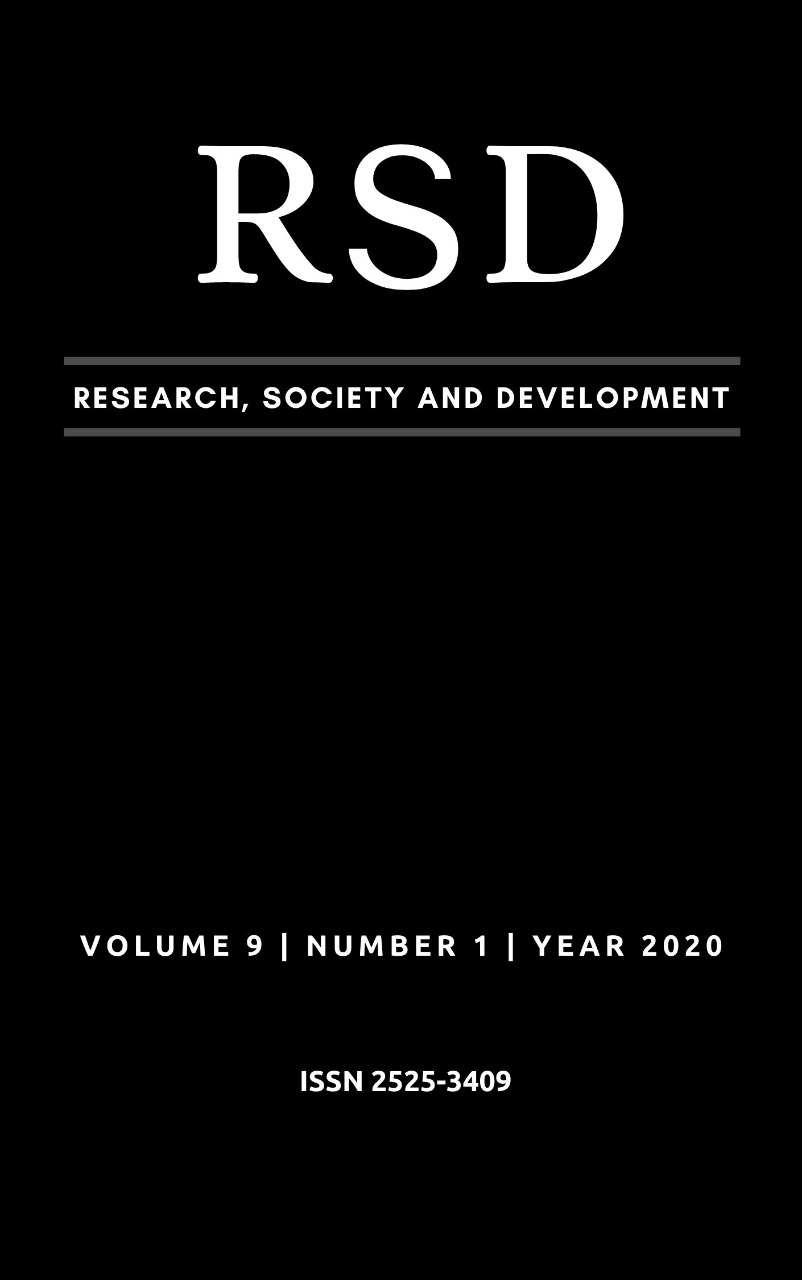Estudo dos modelos de encruamento em aços automotivos por meio do método de elementos finitos e da técnica de difração de elétrons retroespalhados
DOI:
https://doi.org/10.33448/rsd-v9i1.1535Palavras-chave:
springback, AHSS, conformação, elementos finitos, aços de alta resistência, EBSDResumo
Neste trabalho, o objetivo foi correlacionar a anisotropia com o comportamento mecânico e microestrutural de dois aços de alta resistência utilizados na produção de veículos a fim de obter variáveis para alterar futuros processos de fabricação de forma a obter aços com um menor retorno elástico, conhecido como efeito springback, que significa alterações geométricas sofridas pela peça ao final do processo de deformação plástica, após a liberação das forças aplicadas pela ferramenta de estampagem e isso ocasiona falhas dimensionais que comprometem a produção. Nesta pesquisa, foram avaliados um aço bifásico e um aço baixo carbono, sendo Docol_DL800 e LC200 os seus nomes comerciais, respectivamente. Foram realizados ensaios de tração e flexão de três pontos ao ar para determinar as propriedades e comportamentos mecânicos e tais resultados foram comparados com os obtidos por simulação computacional utilizando o método de elementos finitos e foram também correlacionados com os dados microestruturais provenientes da técnica de elétrons retroespalhados. Os resultados indicam que o aço bifásico tem um maior encruamento permitindo um maior efeito springback devido à sua microestutura com ferrita e martensita, alto refinamento dos grãos, maior quantidade de energia residual elástica e um menor grau de desorientação após a conformação mecânica, criando o efeito Bauschinger. Já o aço LC200 apresentou um menor grau de springback graças ao encruamento mais isotrópico devido ao aumento no grau de desorientação dos grãos após a conformação. Assim, concluiu-se que os processos de fabricação desses aços devem buscar aliar alta resistência mecânica com um comportamento mais isotrópico.
Referências
Chongthairungruang B., Uthaisangsuk V., Suranuntchai S., Jirathearanat S. (2013), “Springback prediction in sheet metal forming of high strength steels” Materials and Design v. 50, p. 253-266.
Gan W., Babu S. S., Kapustka N., Wagoner, R. H. (2006), “Microstructural Effects on the Springback of Advanced High Strength Steel”, Metallurgical and Materials Transactions A, Columbus, v.37A, p.3221-3231.
Ghaei A., Green D. E.; Aryanpour A. (2015), “Springback simulation of advanced high strength steels considering nonlinear elastic unloading-reloading behavior” Materials and Design v. 88, p. 461-470.
Gorni A. A. (2011), “A metalurgia por trás dos aços avançados de alta resistência”, Industrial Heating. Julho a Setembro.
Hassan H. U., Traphöner A. G., Tekkaya A. (2016), “Accurate springback prediction in deep drawing using pre-strain based multiple cyclic stress–strain curves in finite element simulation” International Journal of Mechanical Sciences v. 110, p. 229-241, 2016.
Li H., Chen J., Yang J. (2012), “Experimental and numerical investigation of laminated steel sheet in V-bending process considering nonlinear visco-elasticity of polymer layer” Journal of Materials Processing Technology 212, p. 36-45.
Ma Z., Tong G. Q., Chen F., Wang Q., Wang S. (2015), “Grain size effect on springback behavior in bending of Ti-2.5Al-1.5Mn foils” Journal of Materials Processing Technology 224, p. 11-17.
Numisheet 2002. (2002), “Proceedings of the 5th International Conference on Numerical Simulations of 3-D sheet Metal Forming Processes”, D-Y. Yang et al. (eds.), Jeju Island, Korea. Available in: < www.numsiheet2002.org>.
Oxford Instruments HKL. (2007), “Manual EBSD, 2007”, Available in: .
Placidi F.; Vadori R.; Cimolin F.; Campana F. (2008), “An efficient approach to springback compensation for ultra high strength steel structural components for the automotive field” New Developments.
Qudeiri, J.A., Khadra, F.A., Al-Ahmari, A., Umar, U. (2013), “Effect of Material and Geometrical Parameters on the Springback of Metallic Sheets”, Life Science Journal, v.10(2), p.1531-1537.
Silva E. A., “Estudo da correlação entre os modelos de encruamento e as características cristalográficas em aços avançados de alta resistência submetidos ao efeito springback”, Tese de doutorado - Unesp. 206p. 2016.
Silva E. A., Pereira, M. S., Faye J. P., Ribeiro R. B., Sampaio N. A. S., Silva J. W. J, “Identification of elastic-plastic behavior in AHSS using the isotropic hardening model by the finite element method and EBSD”, International Journal of Advanced Engineerging Research and Science (IJAERS), v.6, issue 5, p. 649-658, May 2019.
Sun L., Wagoner R. H. (2011), “Complex unloading behavior: nature of the deformation and its consistent constitutive representation” Int. J. Plast. v. 27, p. 1126–1144.
Uemori T., Yoshida F. (2002), “A model of large-strain cyclic plasticity describing the bauschinger effect and work hardening stagnation”, Int J Plast, 18:661–86.
Yamano T., Iwaya J. (2005), “Study of counter measure of side wall curl usingoverrun-inducing punch”, J of the Japan Society for Technology of Plasticity. Vol. 46, Issue 534, Pages 630-635.
Yang X., Choi C., Sever N. K., Altan T. (2016), “Prediction of springback in air-bending of Advanced High Strength Steel (DP780) considering Young’s modulus variation and with a piecewise hardening function” International Journal of Mechanical Sciences 105, p. 266-272.
Downloads
Publicado
Edição
Seção
Licença
Autores que publicam nesta revista concordam com os seguintes termos:
1) Autores mantém os direitos autorais e concedem à revista o direito de primeira publicação, com o trabalho simultaneamente licenciado sob a Licença Creative Commons Attribution que permite o compartilhamento do trabalho com reconhecimento da autoria e publicação inicial nesta revista.
2) Autores têm autorização para assumir contratos adicionais separadamente, para distribuição não-exclusiva da versão do trabalho publicada nesta revista (ex.: publicar em repositório institucional ou como capítulo de livro), com reconhecimento de autoria e publicação inicial nesta revista.
3) Autores têm permissão e são estimulados a publicar e distribuir seu trabalho online (ex.: em repositórios institucionais ou na sua página pessoal) a qualquer ponto antes ou durante o processo editorial, já que isso pode gerar alterações produtivas, bem como aumentar o impacto e a citação do trabalho publicado.


